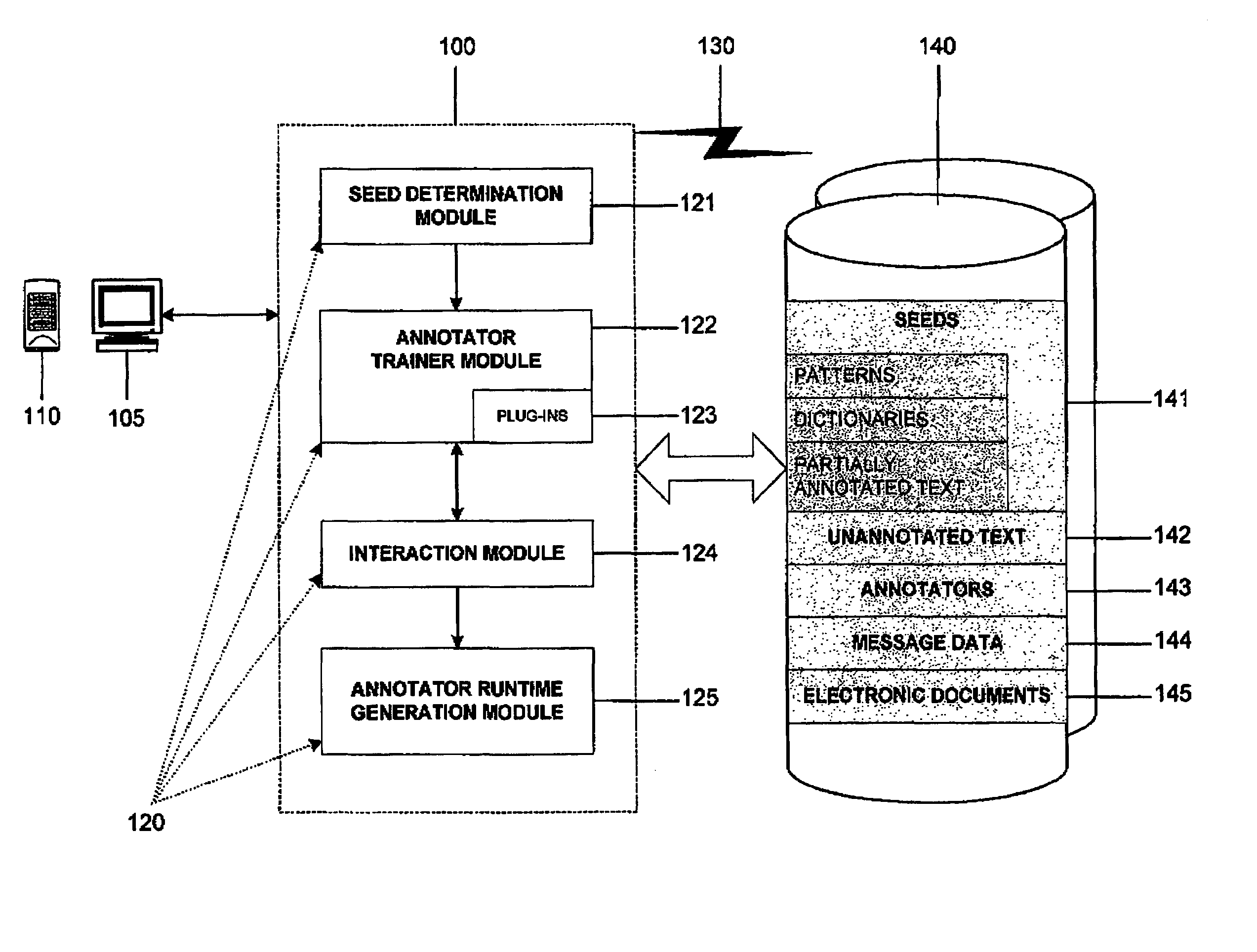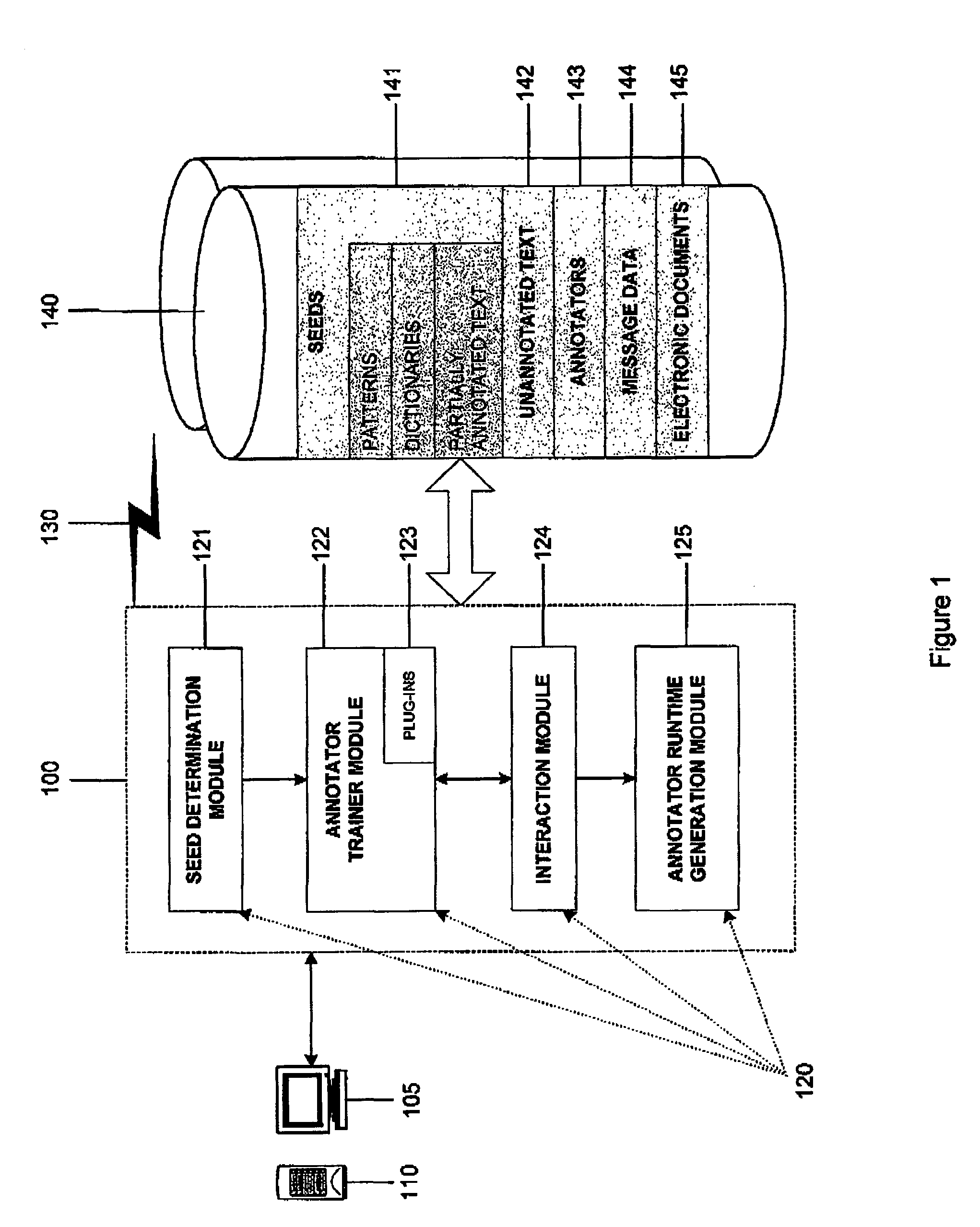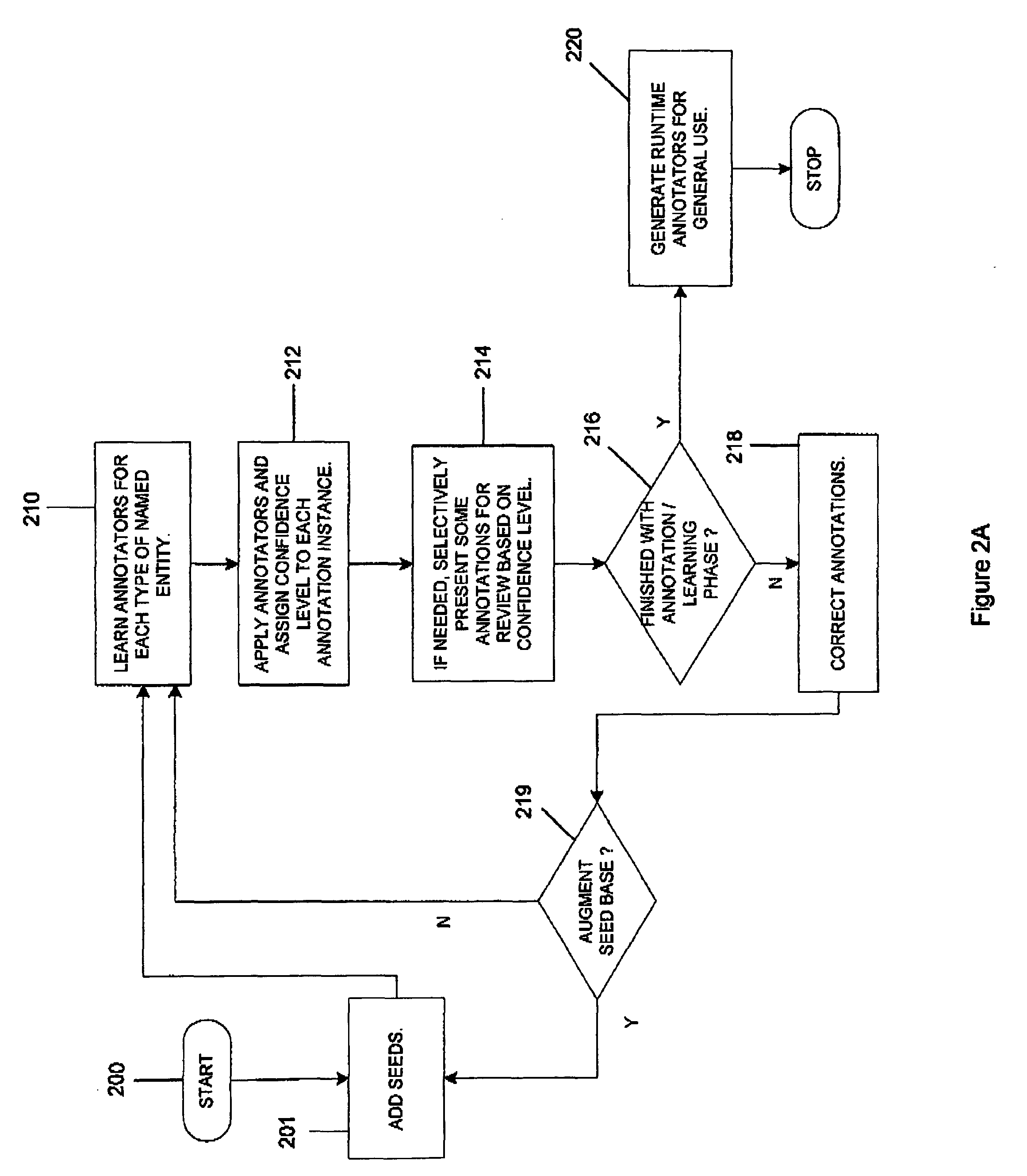Interactive machine learning system for automated annotation of information in text
an information and text technology, applied in the field of automatic annotation of information in text, can solve the problems of inefficiency and error prone text information, inability to compile a complete list of instances of all possible or entity or class types, and time-consuming and error-prone problems
- Summary
- Abstract
- Description
- Claims
- Application Information
AI Technical Summary
Problems solved by technology
Method used
Image
Examples
Embodiment Construction
The invention is directed to a semi-automatic interactive learning system and method for building and training annotators used in electronic messaging systems, text document analysis systems, information retrieval systems and similar systems. This system and method of the invention reduces the amount of manual labor and level of expertise required to train annotators. In general, the invention provides iteratively built annotators whereby at the end of each iteration, a user provides feedback, effectively correcting the annotations of the system. After one or more iterations, a more reliable automated annotator system is produced for exporting and general use by other applications so that documents may be automatically analyzed using the annotation system to perform further operations on the documents such as, for example, routing or searching of the documents.
The interactive learning system and method of the invention interactively develops on the basis of training data, an incr...
PUM
 Login to View More
Login to View More Abstract
Description
Claims
Application Information
 Login to View More
Login to View More - R&D
- Intellectual Property
- Life Sciences
- Materials
- Tech Scout
- Unparalleled Data Quality
- Higher Quality Content
- 60% Fewer Hallucinations
Browse by: Latest US Patents, China's latest patents, Technical Efficacy Thesaurus, Application Domain, Technology Topic, Popular Technical Reports.
© 2025 PatSnap. All rights reserved.Legal|Privacy policy|Modern Slavery Act Transparency Statement|Sitemap|About US| Contact US: help@patsnap.com



